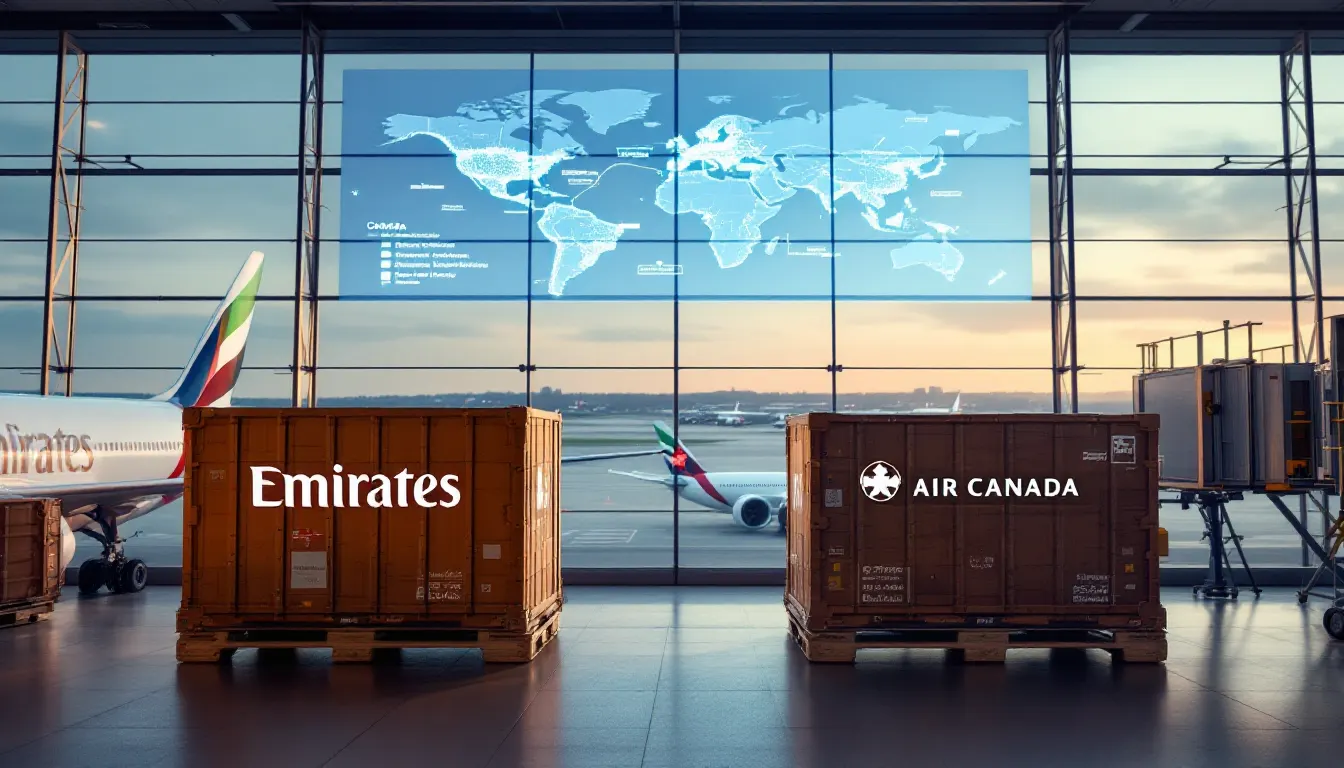Why Emirates-Air Canada Deal Signals Strategic Leverage in Aviation

While global airline partnerships often focus narrowly on code-sharing, Emirates and Air Canada quietly extended their alliance to 2032, deepening cooperation beyond passenger flights to cargo and new gateway integration.
The extended partnership aims to broaden service networks and unlock cargo shipping efficiencies for Canada, particularly by adding new Canadian gateways to Emirates' codeshare system. This move isn’t a typical renewal—it’s a system-level play expanding operational leverage.
Airlines usually face route constraints and costly acquisition of new market access. This partnership cleverly repositions network constraints by sharing capacity and creating compound network effects without fleet expansion.
Winning in international aviation hinges on scalable, automated alliance systems – this deal exemplifies that leverage.
Why Conventional Views Miss The Real Leverage
Industry assumptions frame such partnership renewals as mere service improvements or cost-cutting measures. Analysts often overlook the strategic nuance: this is constraint repositioning within global route networks. Instead of building costly new routes, Emirates and Air Canada optimize existing assets through expanded codeshare cooperation, enhancing both passenger and cargo flows.
Unlike competitors that focus on direct competition and fleet investment, this alliance scales via shared networks and gate access. This dynamic mirrors strategic alliance models which leverage partner strengths to unlock exponential growth.
How This Partnership Unlocks Network and Cargo Leverage
By integrating cargo operations alongside passenger services, Emirates and Air Canada open new pipeline routes for freight, shifting from isolated route constraints to a system of interconnected hubs. This boosts load factors and drives down per-unit costs.
The addition of new Canadian gateways allows Emirates to enter previously underserved markets efficiently, bypassing regulatory and capital limitations associated with new route launches. Meanwhile, Air Canada gains access to Emirates' global network, enriching its service offering without direct capital expenditure.
Compared to carriers who invest billions into fleet acquisition and gate dominance, this partnership compounds network leverage through shared scheduling, joint marketing, and combined infrastructure, creating a self-reinforcing growth loop.
Forward-Looking Implications For North American Aviation
The shift from competition to collaborative network leverage redefines airline growth models in Canada and beyond. Key stakeholders should watch for similar partnerships that unlock network effects without proportional capital burdens.
Other regional carriers can replicate this by leveraging alliances that reposition constraints from resource acquisition to systemic collaboration.
In aviation, alliances have shifted from transactional agreements to infrastructure-scale platforms – this deal is a bellwether.
Why Operators Must Embrace Constraint Repositioning
True leverage arises not from incremental gains but from systemic shifts in how resources and constraints interplay. This Emirates-Air Canada extension exemplifies winning by redefining growth constraints, moving beyond fleet and gate wars into strategic network engineering.
As we’ve explored in constraint repositioning and collaborative business models, such shifts compound advantage with lower risk and capital intensity.
Operators mastering system-level leverage will dominate the next decade of aviation transformation.
Related Tools & Resources
Strategic alliances like the Emirates-Air Canada partnership rely heavily on sales intelligence and precise network engagement to unlock new growth opportunities. For businesses aiming to leverage such data-driven expansion strategies, Apollo offers powerful B2B prospecting and sales intelligence tools that can help identify and cultivate the right partnerships and markets at scale. Learn more about Apollo →
Full Transparency: Some links in this article are affiliate partnerships. If you find value in the tools we recommend and decide to try them, we may earn a commission at no extra cost to you. We only recommend tools that align with the strategic thinking we share here. Think of it as supporting independent business analysis while discovering leverage in your own operations.
Frequently Asked Questions
What is strategic leverage in airline partnerships?
Strategic leverage in airline partnerships refers to the ability to expand network capabilities and operational efficiency without costly fleet or route expansion, often through systems like codeshares and integrated gateways that unlock compound growth effects.
How do airline alliances improve cargo and passenger services?
Alliances improve cargo and passenger services by integrating operations across networks, opening new routes, improving load factors, and reducing per-unit costs through shared infrastructure and coordinated scheduling, as seen in the Emirates-Air Canada extended partnership.
Why do airlines focus on constraint repositioning rather than direct competition?
Airlines focus on constraint repositioning to optimize existing assets, such as shared network capacity and gateways, reducing costly acquisitions of new routes or fleets while gaining exponential network effects and growth advantages.
What advantages do Canadian gateways offer to international airlines?
New Canadian gateways enable international airlines like Emirates to efficiently enter underserved markets, bypassing regulatory and capital-heavy new route launches, thus expanding their codeshare networks and market reach.
How does integrating cargo operations benefit airline networks?
Integrating cargo operations creates interconnected hub systems that boost freight pipeline routes, increase load factors, and lower per-unit shipping costs, enhancing overall network leverage beyond passenger services.
What are the economic benefits of shared infrastructure in airline alliances?
Shared infrastructure reduces individual capital expenditures on fleets and gates while generating self-reinforcing growth through joint marketing, scheduling, and resource collaboration, leading to scalable and lower-risk expansion.
How do strategic alliances differ from joint ventures in airline growth models?
Strategic alliances leverage partner strengths through shared networks and operational collaboration without full integration or ownership, enabling exponential growth with lower capital risks compared to joint ventures that often involve deeper financial and operational commitments.
Why must airline operators embrace systemic shifts in resource constraints?
Embracing systemic shifts allows operators to redefine growth boundaries by engineering network effects and collaborations, moving beyond direct competition and expensive asset acquisition to achieve sustainable, scalable leverage in aviation.

